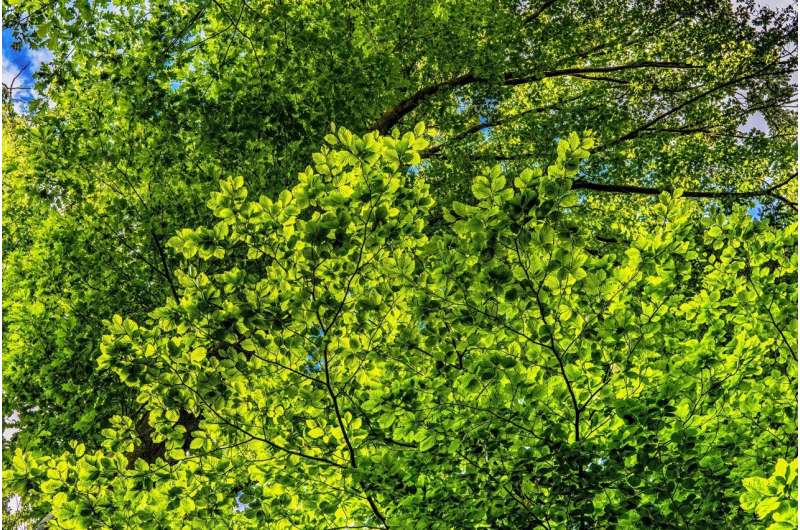Sunlight drives leaf mass area based on spectral composition

Plant leaves is the main organ that converts inorganic carbon into organic carbon. Leaf mass area (the leaf mass per unit area, LMA) characterizes the morphological, physiological and biochemical functions of the leaves, as well as the functions and processes of the ecosystem.
Previous studies have proved that light is the dominant factor driving changes in LMA, rather than temperature, moisture, nutrients, and CO2. However, the contribution of each spectral region of sunlight in shaping LMA is poorly understood.
Wang Qingwei from the Institute of Applied Ecology (IAE) of the Chinese Academy of Sciences and his collaborators conducted a spectral attenuation experiment to quantify the relative importance of solar spectral compositions on variation in LMA and its structural, chemical, and physiological components.
The study was published in Physiologia Plantarum.
The researchers found that LMA changes were driven by UV-B radiation (280-315nm) and green light (500-600nm), and the structure was mainly determined by density rather than thickness. "This finding clarifies the dominant spectrum that drives the changes in LMA," said Wang.
Wang and his collaborators also found LMA and density are significantly negatively correlated with lignin, non-structural carbohydrates, and soluble sugars. This indicated that there is a trade-off strategy in the resource allocation between leaf structure and metabolic functions of plants.
No matter how light intensity changes, the spectral composition of canopy solar radiation can be adjusted through resource investment and structural support to regulate LMA. "Such finding will help to understand the adaptation strategies of terrestrial plants to changes in the Earth's environment and predict the response of terrestrial ecosystem functions," said Dr. Hiroko Kurokawa from Forestry and Forest Products Research Institute (FFPRI), Japan.
More information: Qing‐Wei Wang et al, Leaf density and chemical composition explain variation in leaf mass area with spectral composition among 11 widespread forbs in a common garden, Physiologia Plantarum (2021). DOI: 10.1111/ppl.13512
Provided by Chinese Academy of Sciences



















